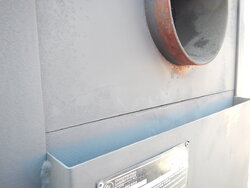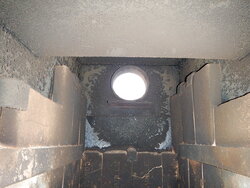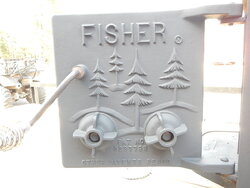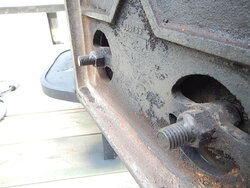Hi all, great site , with more info on stoves than I could ever imagine. I have been burning wood for 36 years now with my Boss single door, so I'm not new to burning. But just recently we bought a Fisher Mama Bear, and refinished it, and fired it up out doors to cure the new paint. I have noticed that there is a seam in the steel plate, horizontal on the rear of the stove just below the outlet collar, this seam will allow smoke to escape when the door is opened ???? I can't imagine why this is a open seam , and not welded tight ? Can any one help with some info on this ? we're ready to simply run a bead of weld across this seam , and seal it up. I admit I am test burning with only 3 sections of 6" flue outdoors, but it does draft OK, the smoke does not exit the seam , until the door is opened, then you can visually see smoke coming out of this seam, Help ??
Fisher Mama Bear smoke leaking thru seam in rear ?
- Thread starter Eastmaniac
- Start date
-
Active since 1995, Hearth.com is THE place on the internet for free information and advice about wood stoves, pellet stoves and other energy saving equipment.
We strive to provide opinions, articles, discussions and history related to Hearth Products and in a more general sense, energy issues.
We promote the EFFICIENT, RESPONSIBLE, CLEAN and SAFE use of all fuels, whether renewable or fossil.





